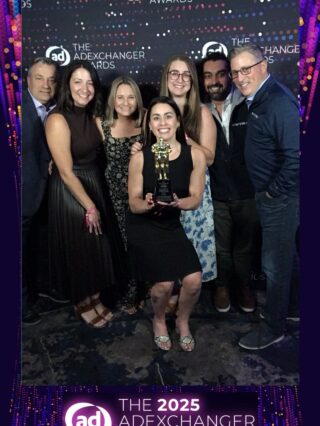The pace of the digital marketing world has been accelerating for quite a while, and 2018 was certainly no exception. We polled our Digital Media team to come up with the most important trends and developments of 2018. As you’ll see (and no doubt already know), 2018 was an eventful year. We’ve cataloged our top items in the list below with a focus on why they’re important and what they mean for what we can all expect in 2019 and beyond. Looking back, it’s hard to believe that all of these things happened in the space of 12 months, but here we go.
Facebook’s woes shine a light on the power of digital platforms
Many people would not mark 2018 as a great year for Facebook. From the Cambridge Analytica scandal to a damaging New York Times report, the social media giant was in the news for all of the wrong reasons in 2018. As bad as this press may have been for Facebook, it did spark an important conversation about the power that large technology platforms wield. For many years, the position of Facebook, Google and others has been that they are neutral platforms and therefore largely not responsible for how people choose to use them. However, as we saw demonstrated in a series of congressional hearings in 2018, that point of view has changed.
So, what does this mean for 2019 and beyond? The way these platforms choose to regulate themselves and/or the way they become more regulated by governments has big implications for marketers and users. The wake of the Cambridge Analytica scandal brought a hasty end to Partner Categories that allowed the linking of platform user data to third party data sets. While that might ultimately be a good thing for everyone, it’s safe to assume that all of this attention will have a chilling effect on how we are able to leverage data for targeting (third party data in particular). In the short term at least, that could mean fewer options for marketers and less relevant ads for consumers.
GDPR brings a critical value equation into focus
The European Union’s General Data Protection Regulation (GDPR) dominated the digital marketing headlines in May of 2018 when it officially went into effect. While the particulars of this directive are complicated, the basic concepts are simple. Users in the EU have to give their consent before their data is collected and used, user data needs to be stored and processed in secure environments, and users have the right to withdraw their consent and access their own data at any time.
While this regulation only officially applies to countries within the European Union, it’s quickly becoming the standard for data and privacy policies worldwide. This is due in part to larger companies not wanting to manage disparate privacy regulations across their various global markets.
Why is GDPR so important? In short, it makes explicit a conversation about the exchange of online content and services for data that’s been happening since the inception of the Internet. GDPR and its ripple effect beyond the EU has forced that value equation to the fore, making both sides more thoughtful about the data that’s being collected and why. Directionally, that should make data more valuable and targeted, while cutting out much of the noise. Ironically, an early winner in the post-GDPR landscape appears to be one of the world’s largest data collectors and a favorite EU target. A study by the German-based Internet browser Cliqz found that none other than Google itself had gained market share in data collection, while smaller advertising technology firms dropped by nearly a third. Their hypothesis is that Google had the resources to become compliant immediately, making websites more confident in keeping their ad tracking code on their sites, while jettisoning code from smaller companies that might be seen as a privacy liability.
Voice grows up
Fueled by digital voice services like Alexa, Siri and Google Assistant, interacting with devices using voice has quickly moved from a phase one novelty into the mainstream. Comscore predicts that by 2020, half of all searches will be voice searches. The Echo Dot was Amazon’s best-selling device for a third holiday season in a row. And who can forget Google’s demonstration at their I/O conference in May that showed their new technology, Google Duplex, making calls and interacting with humans all by itself to make hair appointments and dinner reservations.
The implications of a harder shift from typing and touch to voice are seemingly endless. Brands and marketers need to be ready with useful content and information to satisfy natural language queries. There will also undoubtedly be opportunities for paid inclusion along the lines of sponsored Alexa skills. However, the biggest implication of the growth of voice for 2019 and beyond is the idea that we’re shifting from a world where we’re working to understand computers to a world where computers are working to understand us. That makes interactions with devices far more conversational and personal, and it dovetails with the larger trend of marketing efforts moving from environments of control to contexts of influence and empowerment.
Enter influencer marketing
In a world where marketing takes on a conversational and increasingly personal tone, the authenticity of things like Influencer Marketing have become much more appealing. Consumers tend to trust the people they’ve chosen to follow across their social media channels. Business Insider reports that engagement rates from influencers outperform branded content by roughly a factor of two, which explains why the space is expected to grow to a $5-$10 billion industry by 2022.
Few spaces demonstrate the changing face of media as neatly as the concept of Influencer Marketing. Consumers increasingly want connections and experiences. The shift from talking at consumers through interruptive, push-style messaging to engaging consumers in an authentic conversation is a fundamental paradigm shift in how we will think about media and marketing in 2019 and beyond.
Google rolls out new branding for its marketing products
In May, Google announced it was retiring the long-standing DoubleClick and AdWords brand names in favor of The Google Marketing Platform and Google Ads. While these name changes haven’t been accompanied by huge shifts in functionality, they do signal that Google is making more explicit efforts to bring its measurement and buying tools together. Google’s Demand Side Platform for programmatic buying, long known as DoubleClick Bid Manager, is now Display & Video 360. Their DoubleClick Search product is now Search Ads 360. All of these products now sit within the Google Marketing Platform family, which now also includes the free and premium versions of Google Analytics and Google Tag Manager.
This product movement is a play by Google to get more brands (especially larger ones) bought into their broader ecosystem. As these platforms become more and more integrated, the benefits to using Google for all of your buying and measurement begin to add up. Add into that the significant limits that Google has put on the use and portability of the DoubleClick ID, and what once was a very open platform begins to look more and more like a walled garden. This could ultimately force many brands and agencies to take an all-or-nothing approach to Google’s newly minted ad tech stack in the future.
The shift to personalized marketing experiences
A common thread through all of the digital marketing changes of 2018 is the ongoing march from mass media and marketing to highly-personalized marketing experiences. Generally speaking, technology is driving user expectations at such a breakneck speed that marketers will continue to be challenged to keep up. In 2019 and beyond, the brands and marketers who are willing to think differently about marketing and spend their resources creating agile, personalized experiences for their audiences will be the ones who create the future of this industry.





